What to do if there is a power supply abnormality in Panasonic Monitor?
- NNathan WrightAug 8, 2025
If you encounter a 'Power Supply abnormality' with your Panasonic Monitor, it is recommended to check the P Board (Power SOS).
What to do if there is a power supply abnormality in Panasonic Monitor?
If you encounter a 'Power Supply abnormality' with your Panasonic Monitor, it is recommended to check the P Board (Power SOS).
What should I do if my Panasonic Monitor has a 3.3V line abnormality?
If you are experiencing a '3.3V line abnormality' on your Panasonic Monitor, check the D Board (3.3V SOS).
What to do if a Panasonic Monitor shows Panel Status abnormality?
If there is a 'Panel Status abnormality' with your Panasonic Monitor, check the D, DG Board (Panel Status DET).
Specifies the power requirements for the television.
Details the power usage in different modes.
Provides technical details about the plasma display.
Information about the audio output and speaker specifications.
Lists supported PC signal types and frequencies.
Specifies the supported channel ranges for digital and analog.
Details the required temperature and humidity for operation.
Lists available input terminals and their specifications.
Details various input signal types and their connection specifications.
Lists key features like 3D Y/C Filter, Closed Caption, V-Chip, etc.
Provides physical dimensions and weight for the TV with and without pedestal.
Table detailing signal compatibility for Component, HDMI, and PC inputs.
Essential guidelines to follow when servicing the unit.
Procedures for checking leakage current with the unit unplugged and powered on.
Techniques to prevent damage to sensitive electronic components from static electricity.
Important safety caution regarding ESD prevention during handling.
Recommendations for types of lead-free solder suitable for repair work.
Table mapping board names to their primary functions within the TV.
Steps to remove the rear cover and cooling fans.
Procedure for removing the left and right speaker assemblies.
Steps to remove the cover for the rear terminal connections.
Detailed steps for removing the P-Board, PA-Board, Tuner Unit, and DT-Board.
Instructions for removing the DG-Board and H-Board.
Procedures for removing the HC, D, SU, and SD-Boards.
Steps for removing the SC, SS, C1, and C2-Boards.
Steps to remove the front bracket and the left and right stand brackets.
Procedure for removing the G-Board, GK-Board, and S-Board.
Detailed steps for removing the GS-Board.
Procedure for safely removing the plasma panel assembly from the front frame.
Instructions for removing the squawker speaker and K-Board.
Final steps and precautions for installing the new plasma panel.
General caution statement regarding cable connections and verification.
Illustrates the routing and connection of specific wiring components.
Steps to access the self-check function using the remote and TV buttons.
Instructions on how to exit the self-check function.
Explains the meaning of the self-check screen display and error codes.
Explains how LED blinking patterns identify defective blocks.
Identifies the initial states of No Power indication by the power LED.
Identifies LED indicators on SC-Board and SS-Board for drive circuits.
Steps to enter the Serviceman Mode using the remote control.
Explanation of the key commands for navigating the Serviceman Mode.
Lists the adjustable parameters, sample data, and remarks.
Procedure to access the Memory Edit mode within the Serviceman Mode.
Instructions on how to exit the Memory Edit mode.
Procedure to access device data display for market analysis.
Instructions on how to exit the Device Data mode.
Steps for driver setup, including item preparation and adjustments.
Details specific voltage adjustments for driver sections referring to panel data.
Warning regarding PCB exchange and discharge of capacitors.
Steps for quick adjustments after replacing PCBs like P Board and SC Board.
Diagram showing the physical locations of adjustment volumes on various boards.
Diagram indicating the locations of test points for voltage measurements.
Important notes regarding power fluctuations and DAC adjustment points.
Explains the function of the Hotel Mode for restricting features.
Steps to access the Hotel Mode setup menu.
Description of the various items and functions available within the Hotel Mode menu.
Foil side view of the P-Board with component layout and grid references.
Component side view of the P-Board with IC, Transistor, and Volume locations.
Foil side view of the P-Board with IC, Transistor, and Volume locations.
Component side view of the P-Board with component labels and grid references.
Foil side view of the PA-Board with component locations and grid references.
Component side view of the PA-Board with component locations and grid references.
Foil side view of the H-Board with component locations and grid references.
Component side view of the H-Board with component locations and grid references.
Foil and component side views of the G-Board with component layout.
Foil and component side views of the GS-Board with component layout.
Foil and component side views of the GK, HC, K, and S-Boards.
Foil side view of the DG-Board with component locations and grid references.
Component side view of the DG-Board with component locations and grid references.
Foil side view of the DT-Board with component locations and grid references.
Component side view of the DT-Board with component locations and grid references.
Foil side view of the D-Board with component locations and grid references.
Component side view of the D-Board with component locations and grid references.
Foil and component side views of the C1-Board with component layout.
Foil and component side views of the C2-Board with component layout.
Foil side view of the SC-Board with component locations and grid references.
Component side view of the SC-Board with component locations and test points.
Component side view of the SC-Board showing component layout and connections.
Foil and component side views of the SU-Board with component layout.
Foil and component side views of the SD-Board with component layout.
Foil side view of the SS-Board with component locations and grid references.
Component side view of the SS-Board with component layout and test points.
Diagrams showing the physical locations of various components on the TV.
Specifies the power requirements for the television.
Details the power usage in different modes.
Provides technical details about the plasma display.
Information about the audio output and speaker specifications.
Lists supported PC signal types and frequencies.
Specifies the supported channel ranges for digital and analog.
Details the required temperature and humidity for operation.
Lists available input terminals and their specifications.
Details various input signal types and their connection specifications.
Lists key features like 3D Y/C Filter, Closed Caption, V-Chip, etc.
Provides physical dimensions and weight for the TV with and without pedestal.
Table detailing signal compatibility for Component, HDMI, and PC inputs.
Essential guidelines to follow when servicing the unit.
Procedures for checking leakage current with the unit unplugged and powered on.
Techniques to prevent damage to sensitive electronic components from static electricity.
Important safety caution regarding ESD prevention during handling.
Recommendations for types of lead-free solder suitable for repair work.
Table mapping board names to their primary functions within the TV.
Steps to remove the rear cover and cooling fans.
Procedure for removing the left and right speaker assemblies.
Steps to remove the cover for the rear terminal connections.
Detailed steps for removing the P-Board, PA-Board, Tuner Unit, and DT-Board.
Instructions for removing the DG-Board and H-Board.
Procedures for removing the HC, D, SU, and SD-Boards.
Steps for removing the SC, SS, C1, and C2-Boards.
Steps to remove the front bracket and the left and right stand brackets.
Procedure for removing the G-Board, GK-Board, and S-Board.
Detailed steps for removing the GS-Board.
Procedure for safely removing the plasma panel assembly from the front frame.
Instructions for removing the squawker speaker and K-Board.
Final steps and precautions for installing the new plasma panel.
General caution statement regarding cable connections and verification.
Illustrates the routing and connection of specific wiring components.
Steps to access the self-check function using the remote and TV buttons.
Instructions on how to exit the self-check function.
Explains the meaning of the self-check screen display and error codes.
Explains how LED blinking patterns identify defective blocks.
Identifies the initial states of No Power indication by the power LED.
Identifies LED indicators on SC-Board and SS-Board for drive circuits.
Steps to enter the Serviceman Mode using the remote control.
Explanation of the key commands for navigating the Serviceman Mode.
Lists the adjustable parameters, sample data, and remarks.
Procedure to access the Memory Edit mode within the Serviceman Mode.
Instructions on how to exit the Memory Edit mode.
Procedure to access device data display for market analysis.
Instructions on how to exit the Device Data mode.
Steps for driver setup, including item preparation and adjustments.
Details specific voltage adjustments for driver sections referring to panel data.
Warning regarding PCB exchange and discharge of capacitors.
Steps for quick adjustments after replacing PCBs like P Board and SC Board.
Diagram showing the physical locations of adjustment volumes on various boards.
Diagram indicating the locations of test points for voltage measurements.
Important notes regarding power fluctuations and DAC adjustment points.
Explains the function of the Hotel Mode for restricting features.
Steps to access the Hotel Mode setup menu.
Description of the various items and functions available within the Hotel Mode menu.
Foil side view of the P-Board with component layout and grid references.
Component side view of the P-Board with IC, Transistor, and Volume locations.
Foil side view of the P-Board with IC, Transistor, and Volume locations.
Component side view of the P-Board with component labels and grid references.
Foil side view of the PA-Board with component locations and grid references.
Component side view of the PA-Board with component locations and grid references.
Foil side view of the H-Board with component locations and grid references.
Component side view of the H-Board with component locations and grid references.
Foil and component side views of the G-Board with component layout.
Foil and component side views of the GS-Board with component layout.
Foil and component side views of the GK, HC, K, and S-Boards.
Foil side view of the DG-Board with component locations and grid references.
Component side view of the DG-Board with component locations and grid references.
Foil side view of the DT-Board with component locations and grid references.
Component side view of the DT-Board with component locations and grid references.
Foil side view of the D-Board with component locations and grid references.
Component side view of the D-Board with component locations and grid references.
Foil and component side views of the C1-Board with component layout.
Foil and component side views of the C2-Board with component layout.
Foil side view of the SC-Board with component locations and grid references.
Component side view of the SC-Board with component locations and test points.
Component side view of the SC-Board showing component layout and connections.
Foil and component side views of the SU-Board with component layout.
Foil and component side views of the SD-Board with component layout.
Foil side view of the SS-Board with component locations and grid references.
Component side view of the SS-Board with component layout and test points.
Diagrams showing the physical locations of various components on the TV.
| Screen Size | 42 inches |
|---|---|
| Display Technology | Plasma |
| Resolution | 1024 x 768 |
| Aspect Ratio | 16:9 |
| Contrast Ratio | 10000:1 |
| HDMI Ports | 2 |
| Component Video Inputs | 2 |
| S-Video Input | 1 |
| Composite Input | 3 |
| PC Input | 1 |
| Tuner | ATSC |
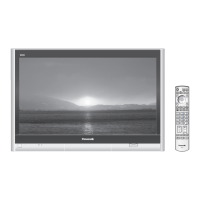
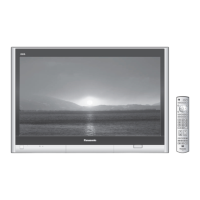
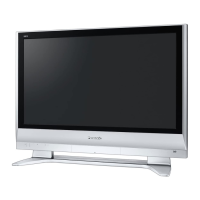

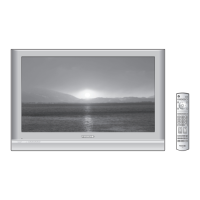
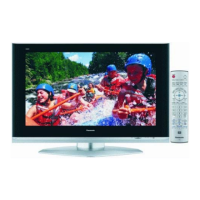
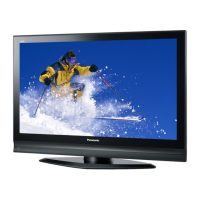
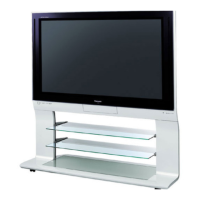

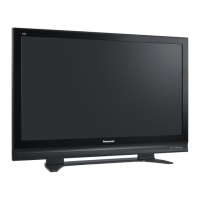

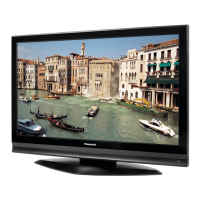
